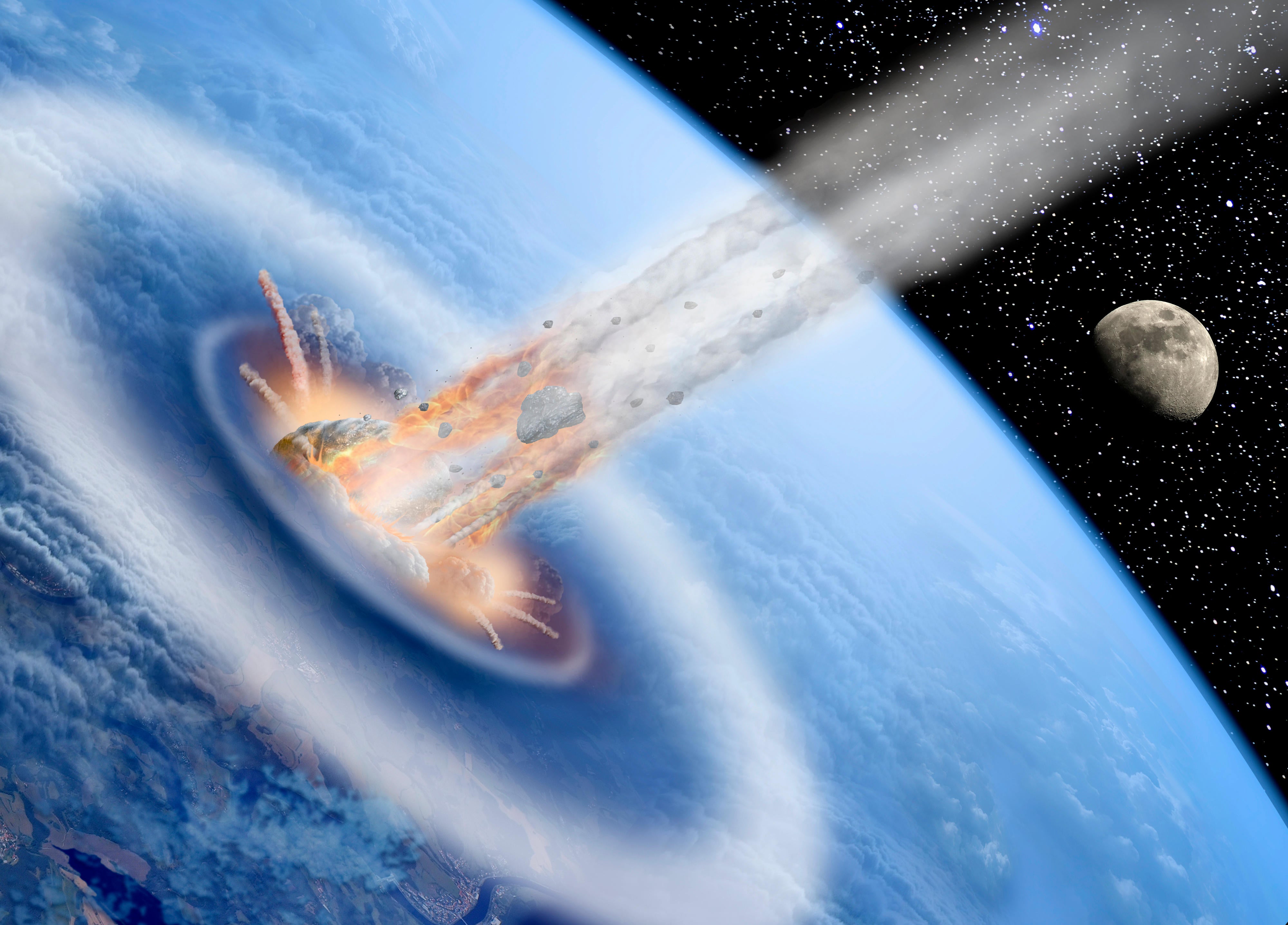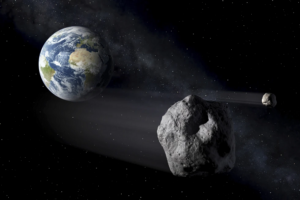
An asteroid dubbed 2024 MK will make its closest approach to Earth on Saturday morning. Measuring between 393 feet and 853 feet (120 meters to 260 meters) wide, it will pass by at about three-quarters of the distance between Earth and the moon.An asteroid dubbed 2024 MK will make its closest approach to Earth on Saturday morning. Measuring between 393 feet and 853 feet (120 meters to 260 meters) wide, it will pass by at about three-quarters of the distance between Earth and the moon. While the asteroid is not visible to the naked eye, those with small telescopes may be able to spot it in the southern sky. Stargazers in the Southern Hemisphere have the best chance of seeing it, as the asteroid will appear higher overhead. People in the U.S. may want to wait until Saturday night, when the asteroid will appear dimmer but easier to see without the sun’s glare. This asteroid is smaller than the 2,310-meter (7,500-foot) asteroid that safely flew past Earth on Thursday, which was only visible with professional telescopes. According to NASA asteroid expert Davide Farnocchia, asteroids of this size fly by approximately every 25 years. He noted that while such events are not uncommon, they do not occur every day. For those who miss this weekend’s celestial visitor, mark your calendar for April 13, 2029, when an asteroid called Apophis will zoom past Earth, visible to the naked eye from parts of Europe, Africa, and Asia.

An asteroid will be hurtling harmlessly past Earth this weekend. With the right equipment and timing, you might just spot it.
The space rock, called 2024 MK, will make its closest approach to Earth on Saturday morning, at about three-quarters of the distance from Earth to the moon. First spotted two weeks ago by a South African observatory, it is about 393 feet to 853 feet (120 meters to 260 meters) wide.
Smaller objects are constantly whizzing past Earth, according to asteroid expert Davide Farnocchia of NASA’s Center for Near-Earth Object Studies. Asteroids the size of the latter fly by about every 25 years.
“We’ll encounter a few of them in our lifetime, but it’s not something that happens every day,” he said.
On Thursday, a 2,310-meter (7,500-foot) asteroid safely flew past Earth, but it was farther away and only visible with professional telescopes.
For Saturday, stargazers should bring a small telescope, as the asteroid is not bright enough to be seen with the naked eye and is moving quickly across the southern sky, making it difficult to spot.
“The asteroid will plow through that star field,” said Nick Moskovitz, an astronomer at Lowell Observatory.
Viewers in the Southern Hemisphere have the best chance of seeing it, as the asteroid will appear higher overhead. People in the U.S. may want to wait until Saturday night, when the asteroid will appear dimmer but easier to see without the interference of the sun’s blinding light.